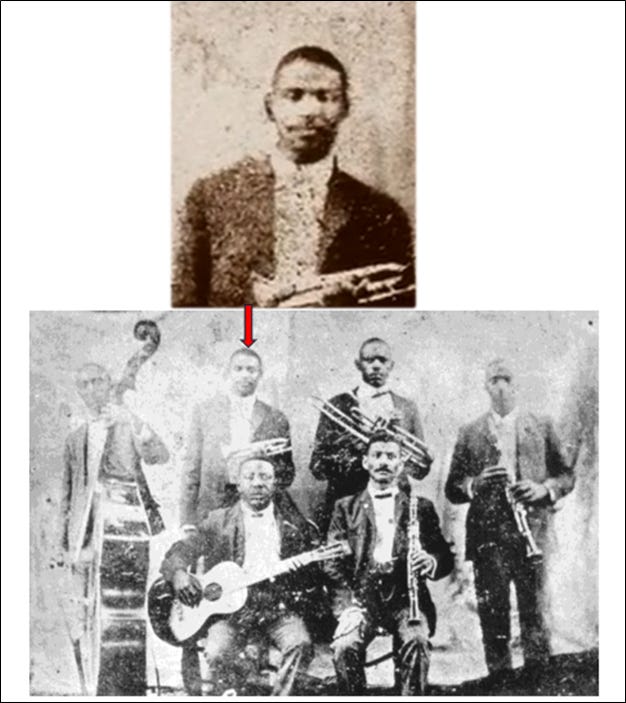PREVIEW: America's Deadliest Election – Mirrored Today
It undid the Civil War but unleashed a CULTURAL REVOLUTION
At eleven thirty on the morning of April 24th, 1877, the 3rd Infantry of the US Army, clad in dress uniform and accompanied by the regimental band, proceeded to the New Orleans levee and boarded a steamer.
As the US military sailed out of the city, Jim Crow came marching in.
And America was set back a century in its quest for civil rights.
It was as if the South had won the Civil War.
It all came out of one election in Louisiana, violently stolen from Black and sympathetic White voters in a campaign that has never been equaled for bloodshed and chaos.
All the elements that created this inferno are present today, including the character of the main actor involved.
America’s Deadliest Election, by Dana Bash and David Fisher, requires one mental re-set as you plunge into the story: the main parties have their roles reversed from what they are today. The Republicans were the champions of the Black vote – important in the politics of the day, because for a brief historic period Black people could vote! Then the idea got shut down by the Democrats, who favored White control and White governorship.
The actions they took to shut it down created the carnage described in the book.
Democracy has often been referred to as an experiment. This is the story of what happened — and what can happen again — when that experiment fails.
The most notable of the White groups post-Civil-War, the Ku Klux Klan, had been formed in Pulaski, Tennessee, in December 1865 by six former Confederate officers. A secret social fraternity, based loosely on existing social organizations like the Masons, its name supposedly was derived from the Greek word kuklos, meaning circle. The kuklos clan, or tightly knit familial group, quickly became known as the Ku Klux Klan. It carefully watched the formation of the new state constitution in Louisiana.
On July 30, 1866, a glorious summer day in New Orleans, a convention to create a new state constitution was scheduled to meet at noon. The year before the Louisiana Constitutional Convention had granted Black people some citizenship rights but denied them the right to vote. Black Republicans gathered to push for full citizenship rights. A gang of white supremacists and ex-Confederates attacked. They stormed into the convention hall and started shooting. 48 people were killed and 150 were injured.
The new state constitution had hoped to reach much further than the end of slavery, imposing a new social order on the South: it granted full citizenship to Black men and outlawed segregation on public transportation and in restaurants and classrooms.
The first election to occur under the new constitution was the 1872 election for governor. A massive majority of primarily Black Louisiana voters ratified the state constitution and elected twenty-five-year-old Republican Henry Warmoth as the new governor.
Within days the conservative media began reinforcing the rapidly spreading belief that the election had been rigged. At that time the secret ballot did not exist. Originally, Americans had voted out loud — viva voce, it was called. In a crowd, that could be a deadly ‘reveal’.
The legitimacy of Black voters for the election of 1868 triggered, as Warmoth predicted, “The most bitter election in American history…The whole question of Reconstruction was to be settled by this election.”
There was little doubt about the national outcome — Grant would win easily — if the emancipated slaves were allowed to vote. If.
The Civil War had ended eight years before. The war to end Reconstruction was just beginning.
The Knights of the White Camelia, a white-supremacist group akin to the Klan, terrorized freedmen.
This takes place against the backdrop of the use of violence to achieve political aims, which was firmly ingrained in American history.
The eighteen-year-old editor of the St . Landry Progress, for example, Emerson Bentley, was a white carpetbagger from Ohio who had come to Opelousas, Louisiana, to fight for civil rights. He was teaching a class that Republicans “do not plot in the dark; we do not assassinate inoffensive citizens or…seek the lives of political opponents …” Three members of another white supremacist group, the Seymour Knights, burst into his classroom. Among them was a judge and the local constable. After forcing him to sign a retraction they began brutally whipping him. The children ran screaming from the church.
The rumor spread in the white community that Black people were planning retaliation.
Hundreds of well-armed white men raced to the site. On September 28th the massacre began. Twenty-nine Black men were captured that day and twenty-seven of them were killed. The next several weeks were hunting season for vigilantes. Black men and women and white Republicans were murdered, many of them buried in shallow graves, others left where they were killed. Some were chased into the woods and swamps and lynched. Bentley’s co-editor of the Progress newsletter, C. E. Durand, was among the first victims; his body was left hanging in front of the Opelousas drugstore. A later government investigation reported 233 victims. A federal legislative committee eventually estimated that a thousand Black and white Republicans had been killed…
NOTE: THIS ARTICLE ENDS WITH THIS PICTURE; BECOME A PAID SUBSCRIBER AND FIND OUT WHY:
Thank you for following Barry’s Substack, focusing on the meaning behind the headlines. To join our community, please support our work by becoming a paid subscriber; your comments and thoughts could be included in future articles.







This is such an important part of America’s history and it gets little attention. How interesting that this racist violence started in the failed petro-state of Louisiana. They have not progressed, even though they claim, as evangelicals, to follow the teachings of Jesus Christ.
Thanks for the great information. Keep it coming!